Sassafras is one of my favorite plants. Since I was shown as a child that Sassafras has leaves of three different shapes, I always thought it was a really cool plant. Somehow I seem particularly drawn to the mitten-shaped leaves. Guess that’s the kid in me screaming to get out.
Sassafras leaves all have toothless edges. The single leaf is oval shaped and may come to a point at the ends. The double leaf is the mitten shape where a large oval shape would fit the hand and a side lobe would fit the thumb. The third leaf has three lobes where the central lobe is usually larger than the two side “thumbs”.
Loose leaf photos taken 17Oct08 – leaves collected 16oct08.
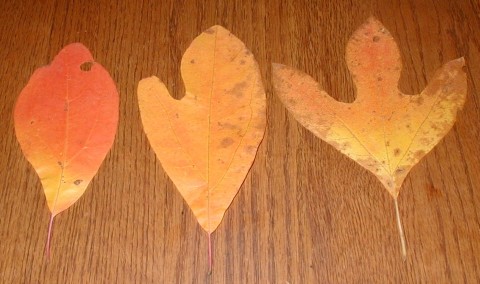
The three shapes of Sassafras leaves, from the left are the single, mitten and tri-lobed leaves.
Sassafras, Sassafras albidum, is a medium-sized tree and will reach 30 feet tall. A mature tree will spread by sending up shoots from its roots. The sassafras that we notice at the woods’ edge are usually the young trees. Indeed, I was surprised to learn that sassafras trees can be so tall! I had only ever noticed the little trees while playing around the woods as a kid.
There are only three members of the Sassafras genus, two of which are native to China and Taiwan. Sassafras albidum is native to the Eastern United States.
All the Sassafras species release a pleasant, spicy odor when the twigs, leaves, flowers or roots are crushed. Some say it smells like root beer and that’s because people used to, and some still do, make a root beer from Sassafras root.
Young stems or branches are green and the older ones have a thicker bark that becomes brown and furrowed with age.
The leaves are so pretty in the fall. At the edge of the woods, where you’ll usually find Sassafras growing, or perhaps in an abandoned field, sassafras stands out with yellow-orange or tangerine and fruity colors. Sassafras sports many different colors during Autumn, changing from green to yellow or orange-red and crimson before turning brown and mottled with spots.

The many colors of Sassafras show yellow, orange, green, red and crimson.
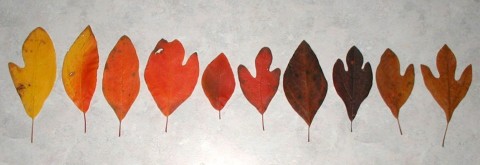
Sassafras rainbow of yellow, orange, red and brown.
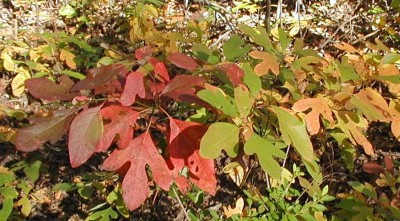
Green sassafras leaves changing over to red and orange. Photo taken 10Oct08.

The more common orange-yellow fall leaf color of Sassafras. Photo taken 10Oct08.
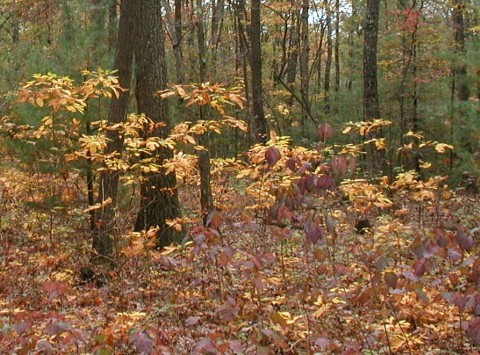
The edge of the woods is decorated by the orange-yellow leaves of sassafras and red-purple leaves of maple-leaved viburnum. Photo taken 16Oct08.
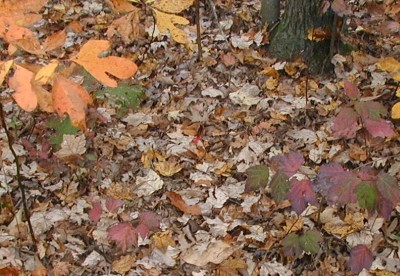
Close up view of sassafras on the left and maple-leaved viburnum on the right. Photo taken 16Oct08.
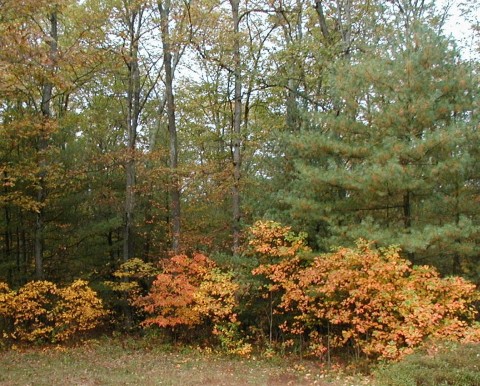
Autumn Sassafras being colorful at the edge of the woods. Photo taken 17Oct08.
Even the white pine is getting in on the annual color change. A prior year’s needles are turning yellow and will stay on the branches for a week or more before they fall.
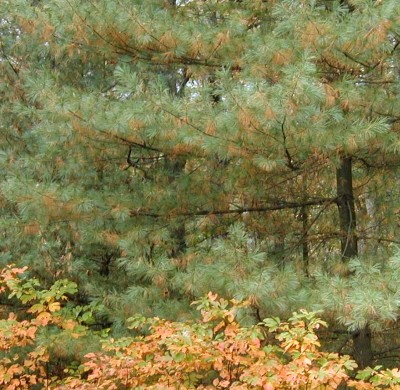
Yellowing white pine needles complement the colorful sassafras. Photo taken 17Oct08.
That’s one thing I love about nature…you look one place and find many interesting things to ponder. For example, one doesn’t think that pine trees will shed their needles because they are evergreen trees, right? Then again, if you’ve been into the woods one thing you’ll notice around the pine trees is that there are plenty of needles on the ground. Pine trees really do shed their needles. It’s funny that the first year we noticed the yellowing of the pines we were worried that the trees had some kind of disease!
Just goes to show that it pays to read and ask questions – you’ll learn a lot more. Keep reading!
Hi– your photographs of sassafras leaves are lovely! I’m part of an a cappella group named Sassafrass, and I was wondering whether you’d be willing for us to use some of your photographs (especially the middle one, of the rainbow of leaves clustered together) in promotional materials for our group? Email me and let me know!
gaudiorrr at g mail dot com.